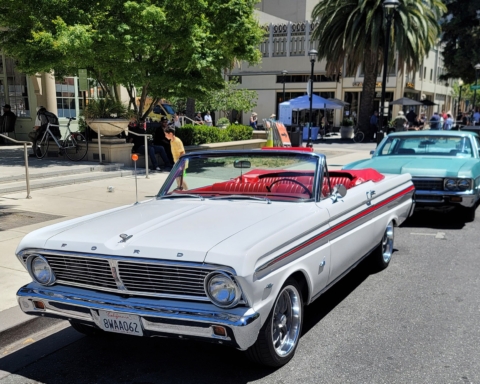By Jim Clifford
Who was the “Carrington” of Carrington Hall, the Sequoia High School auditorium that has given generations of budding musicians and amateur thespians a chance to try their wings as performers?
The Carrington in question was Otis Carrington, a long-time art, music, and drama teacher at the high school. He was much more than a campus legend, however. He was one of the most prolific writers of children’s operettas during a time when operettas, as they say in show biz, “packed ‘em in.” Examples of the musical form, which was usually a light play set to music with speaking, singing, and dancing parts, include Franz Lehar’s “The Merry Widow” and Victor Herbert’s “Babes in Toyland” and “Naughty Marietta,’’ all produced in the early 1900s.
This would have been about the time Carrington, who came to the school in 1907 as a music instructor, launched his professional operetta career with “Windmills of Holland.” The year was 1912 and the scene of the debut was the Sequoia auditorium. By 1927 “Windmills of Holland” was produced in high schools all over the nation. Other popular works by Carrington included “Polished Pebbles,” “Isles of Chance” and “Bits of Blarney.”
The auditorium, which opened in 1923, was christened Carrington Hall in the early 1960s to honor this musical innovator, who was born in 1884 and died in 1964. A plaque notes that his works were performed 25,000 times worldwide. In 1949, the Christian Science Monitor ran a feature on Carrington that said hardly a day passed without a showing of at least one Carrington operetta somewhere.
“The secret of Otis Carrington’s success lies in his ability to write simply,” the Monitor’s music critic Harold Rogers wrote. “He understands the limitations of his young singers and actors and always works within those limitations.” Carrington wrote “Windmills” after he was unable to find any suitable operettas for his students. The operetta was so successful it was performed 30 times in California in the first year alone.
In addition to turning out high school musicals, Carrington authored sacred music. In 1960 he won a contest sponsored by Lorenz Publishing, a national publisher of sacred music. The songs were “I Hear Children Singing” and “Teach Me Thy Way, O Lord.” One of his sacred songs was inspired by a window at the First Congregational Church on Euclid Avenue, which Carrington attended. The work entitled “Behold I Stand at the Door and Knock” stemmed from his gazing at a church window that depicted Jesus knocking at a door.
Carrington was a man of many other gifts, according to an interview published in 1962 when he was 78 years old. Redwood City Tribune reporter Otto Tallent said Carrington, who retired from the high school in 1950, painted in watercolors to relax, mostly redwoods and marine scenes.
Tallent described Carrington as a “quiet, unassuming, genteel man who, if he can’t say something good about someone, doesn’t say it at all.”
Carrington credited his wife of 54 years, Alma, with much of his success, saying she had “plenty of patience.” The couple had five children.






